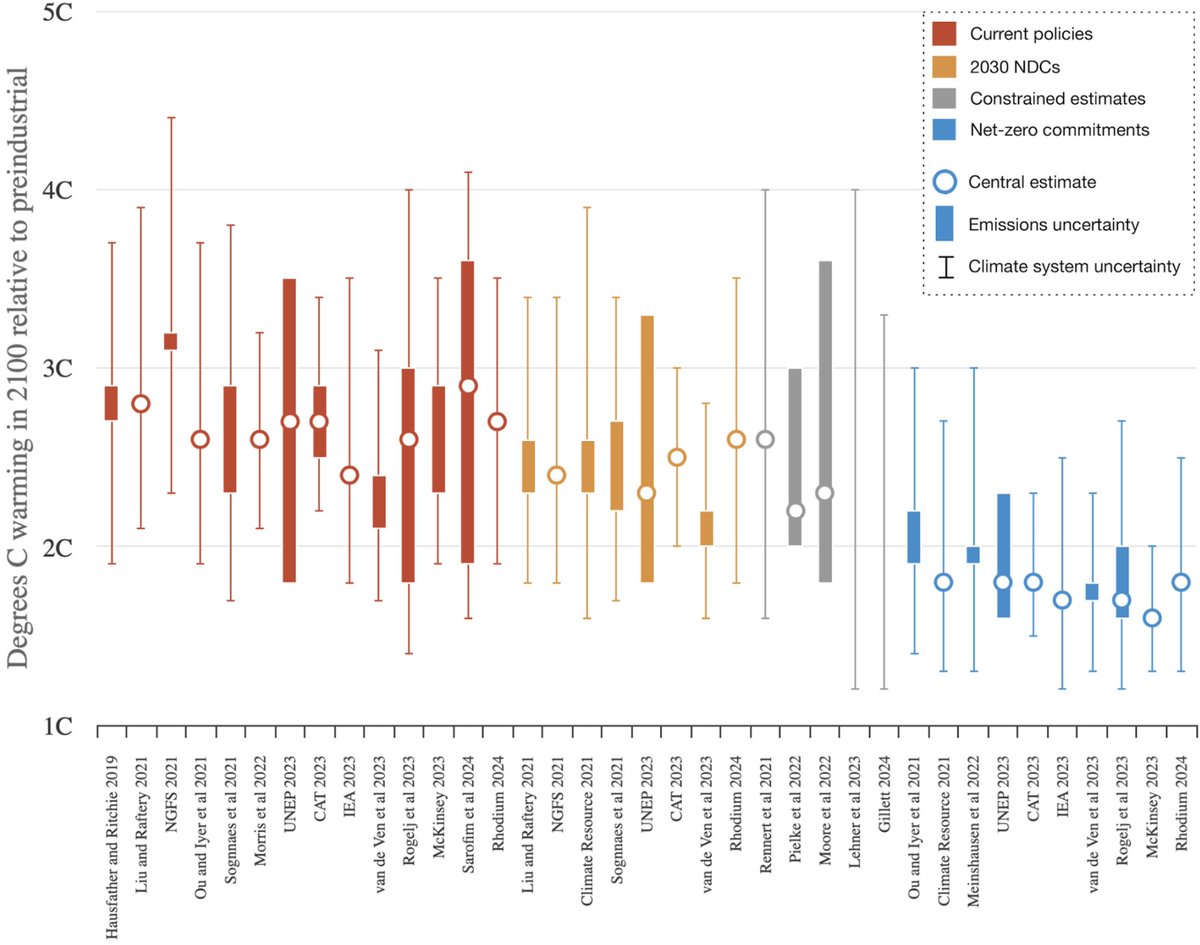A provocative piece by @TedNordhaus in today's Wall Street Journal makes the case that effective climate policy is one that promotes human prosperity – particularly in poorer countries – while adopting policies to invest in and promote clean energy. wsj.com/articles/ignor… 1/7
The piece argues continuing political, economic and technological modernization, not a radical remaking of society, is key to both slowing climate change and adapting to it. It suggests a richer world is one of lower population growth, higher equality and adaptive capacity. 2/7
This is also the assumption underlying the future scenarios used by the IPCC. The most sustainable future (SSP1) with the easiest path to deep decarbonization is also one of the highest economic growth and lowest population scenarios considered: 3/7 

Nordhaus argues "Long-term economic growth is associated with both rising per capita energy consumption and slower population growth. For this reason, as the world continues to get richer, higher per capita energy consumption is likely to be offset by a lower population." 4/7
Furthermore, a richer world is one where it is easier to decouple the growth of human welfare from environmental degradation, where "energy consumption should be less carbon-intensive than it would be in a poorer, less technologically advanced future." 5/7
There are strong linkages between growth and adaptive capacity: "In Bangladesh, 300,000 people died in Cyclone Bhola in 1970, when 80% of the population lived in extreme poverty. In 2019, with less than 20% in extreme poverty, Cyclone Fani killed just five people." 6/7
Of course, building human prosperity in a way that also reduces global emissions requires substantial policy interventions. The world has started bending the curve away from high emissions outcomes with investments in clean energy. This needs to have to expand dramatically: 7/7 

• • •
Missing some Tweet in this thread? You can try to
force a refresh




















